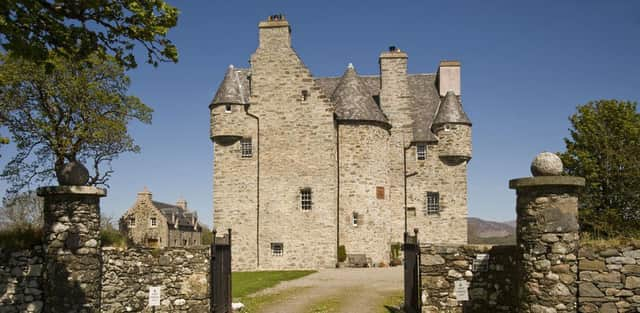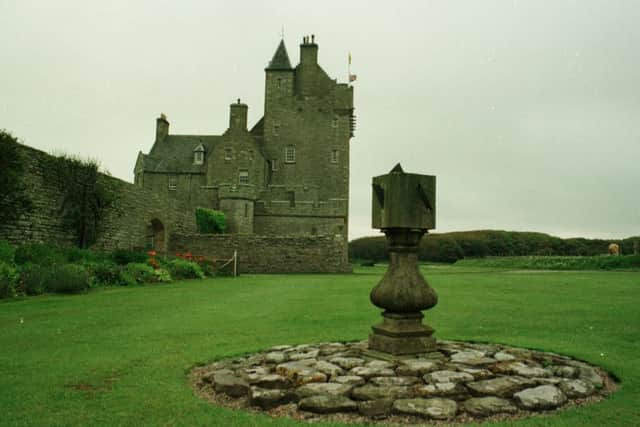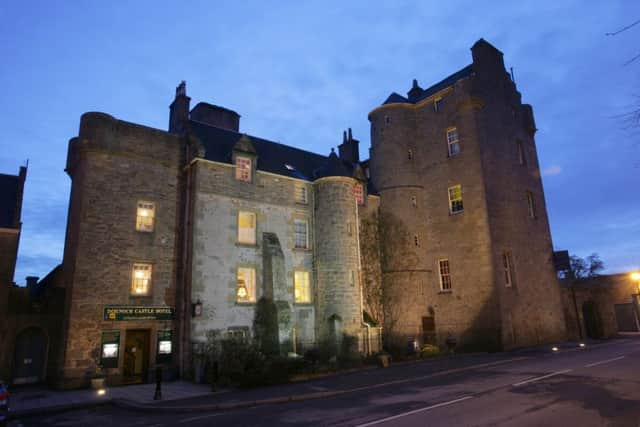Eight Scottish hotels steeped in history


So what are the oldest, most historic places to stay in Scotland?
The Witchery by the Castle, Edinburgh
With such an alluring name, what exactly is the history of this stylish boutique hotel? Located in a 16th century building in the heart of the city’s old town and right by Edinburgh Castle, this five-star abode boasts an award-winning restaurant (including Scotland’s ‘most civilised dining room’) and quirky, Gothic suites. But the name has more gruesome past due to the area’s links to the burning of witches in the sixteenth and seventeenth centuries. It is thought that more women were put to death on Castlehill during the reign of James VI than anywhere else in Scotland.


Advertisement
Hide AdAdvertisement
Hide AdThe building, Boswell’s Court, was originally inhabited by James Boswell, the uncle of Dr Johnson’s biographer and has been in continuous occupation for over four centuries. The entrance to the hotel is still pretty much as it was; a traditional stone close just off of the bustling Royal Mile. The original carved inscription on the doorway can still be seen and includes the initials and motto of the former owner, merchant Thomas Lowthian, for whom the building was constructed for in 1595.
Dornoch Castle, Sutherland
Thought to have dated back to the 1400s, Dornoch Castle Hotel in Sutherland has had a violent history, which belies its current status as a luxury retreat. After the clan Murray and Mackay war and subsequent siege in 1570, the castle was set alight and all former history and documentation was destroyed. The Castle sits on the site of the original Bishop’s Palace of St. Gilbert, who founded the cathedral in the early 13th Century. In 1557 the Palace was gifted to the Earl of Sutherland by Bishop Robert Stewart in order to safeguard the property of the Church, which did not happen.
Significant rebuilding of the Castle took place after the fire, and included the addition of the upper part of the distinctive tower. Rebuilding and further alternations continued in the 18th Century as the Castle had fallen into disrepair. It was then to become a school, jail and hunting lodge before being turned into a hotel in 1947.


Barcaldine Castle, Oban
Known as the Black Castle, Barcaldine is Argyll’s only ancient castle and dates back to 1609. Owned by “Black” Duncan Campbell, the Castle underwent an extensive renovation in 1897 by Sir Duncan Campbell, 3rd Baronet of Barcaldine. Today’s guests can enjoy views over Loch Creran and the snow-capped mountains of Glencoe from the traditionally decorated rooms.
It is this Castle’s location that lead it to be part of the Glencoe Massacres due to the delay of Maclan of Glencoe (a branch of Clan Donald) at the Castle, on his way to plead allegiance to King William. This resulted in the famous killings, and puts Barcaldine on the map of historical hotels in Scotland. As you can imagine, the bloody history has resulted in more than a couple of modern day ghost stories and sightings.
Ackergill Tower, Wick


Not many hotels can boast of views of their own private beach, but this is just one of the many unique aspects of historical Ackergill Tower in Wick. Built in the 16th Century (but with reference to the land dating as far back as the mid-14th century), Ackergill Tower is awash with legend, family feuds and the odd ghost or two.
Ownership of the Tower was passed down from Sir Reginald de Cheyne to his daughter where it remained in the family for eight generations. A feud then ensued between clans Gunn, Keith and Sinclair, after which the Tower was acquired by John Campbell, the 2nd Earl of Breadalbane and Holland in 1676 as repayment of debts owed by the Sinclair’s. After a period of neglect, Ackergill was bought by Sir William Dunbar of Hempriggs in 1699 and renovation work started. The Dunbars’ remained the owners of the Tower until 1986 when it was sold and underwent further restorations. It was opened in 2012 after a further sale, and remains a five-star luxury destination.
Roman Camp, Callander
Advertisement
Hide AdAdvertisement
Hide AdOriginally a 17th Century manor house (which possibly incorporated a hunting lodge) on the estate of the Earl of Moray, Roman Camp Hotel is named after the earthwork found to the south of the gardens, which is believed to be Roman and may be linked to a Roman Fort at Bocastle, to the north of Callander. Today the hotel, known for its distinctive pink colour, is a boutique-style retreat with a beautiful garden and grounds, perfect for weddings.


The main building was remodelled in 1909 by Lord Esher, who acquired the house in 1897. The main additions were the towers of the north and east sides, one of which houses a small stone chapel, the library, drawing room and guest house. All of these additions paved the way to the house becoming the hotel is it today.
The Salutation Hotel, Perth
Reputed to be Scotland’s oldest hotel, The Salutation Hotel in Perth has a place in Scottish history thanks to its links to Bonnie Prince Charlie. The hotel, whose location is in the centre of Perth, has been open to guests since 1699 but before then it was a private house owned by the Murray family (also known as Lord Scone and Viscount Stormont). It is also described as an unofficial landmark within Perth and can be identified by the two figures of Black Watch pipers set into the façade.
The most famous tale of the hotel is the history of room 20, which is where Charles Edward Stuart (Bonnie Prince Charlie) was said to have planned his rebellion, as well as raising funds for his cause.
Traquair House, Innerleithen
Purported as being Scotland’s oldest inhabited house, Traquair House has a rich and fascinating history as well as links to historical royalty and an on-site brewery, which is still in use today. The Stuarts of Traquair supported Mary Queen of Scots and the Jacobite cause, and eventually paid the price by being imprisoned, fined and isolated. Traquair House has, as a result, been preserved in time, making it an ideal spot to learn more about its place in Scottish history.
Consisting of only three rooms, a stay at Traquair House is an intimate affair, but its roots of a hunting lodge for the Kings and Queens of Scotland tell of an abode that played host to many more guests. In 1491 it was gifted by the Earl of Buchan to his son, James Stewart. During this time the main building was completed and it house became part of political history thanks to its association with Mary Queen of Scots. These days, the 21st Lady of Traquair, lives in the house with her family.
Kenmore Hotel, Kenmore (oldest inn)
Scotland’s oldest inn sits on the banks of the River Tay and offers guests unparalleled views of the picture perfect mountain scenery that is unique to the Scottish Highlands. Kenmore is a conservation area, and the namesake hotel, which dates back to the 16th century, is the central place to explore the beautiful location.
Advertisement
Hide AdAdvertisement
Hide AdBut it is the Kenmore Hotel’s more famed guest, Robbie Burns, who literally left his mark in the form of a few lines of verse on a chimney breast in the, now, Poet’s Bar, which will grab the attention of visitors. The hotel was commissioned in 1572 by the Laird, Colin Campbell, and was originally a tavern. He granted a lease to his servant and his wife in order to run it as an honest hostelrie. In the 17th century, Cromwell’s army marched past in pursuit of the Earl of Montrose, and dined in the hotel. Such was their liking of the meal, they spared the hotel from torching and destruction that took place in the area. Later, Queen Victoria and Prince Albert enjoyed their honeymoon at the hotel.